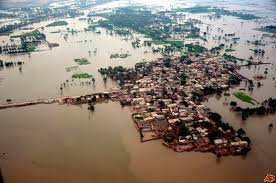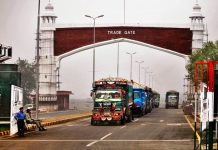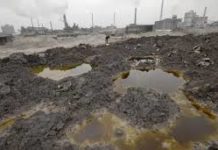Web Desk
Pakistan government has declared the floods a “national emergency” after over 900 people died and more than 30 million are without shelter as monsoon rains continue to lash the South Asian country.
At least 937 people have died since mid-June, including 343 children, according to the National Disaster Management Authority (NDMA), with large parts of the southwestern province of Balochistan remaining submerged.
More than half of the casualties are from Balochistan and southern Sindh province where 234 and 306 people died respectively amid record rains that have affected half a million houses across the country.
Prime Minister Shehbaz Sharif has postponed his official trip to the United Kingdom, as he appealed for funds from friendly countries and international institutions amid the worst flooding in decades.
“The ongoing rain spell has caused devastation across the country. The losses, though yet to be documented, are comparable to flash floods of 2010,” Sharif tweeted, referring to the deadly 2010 floods.
Prime Minister Shehbaz Sharif said that Rs28 billion will be distributed among the victims, which has already been handed over to Benazir Income Support Programme. “This matter does not end here, as the rains continue, this amount will increase.” he said during his visit to the flood hit areas in the Southern province of Sindh.
The worst-hit areas are Balochistan and Sindh, but almost all of the country has suffered this year due to incessant rains and floods.
In Khyber Pakhtunkhwa province, where nearly 200 people have been killed, rescue efforts were in full swing, particularly in the worst-hit areas of Swat and Dir.
“In northern KP [Khyber Pakhtunkhwa] we are looking at Swat and Dir where we have flash floods situation arising, and with a lot of population on the banks, our focus is there,” Muhammad Ali Saif, the spokesman for the province said.
“We have managed to evacuate a large number of people, and provided them temporary accommodation in tents,” he said.
According to the NDMA forecast, parts of Punjab and Khyber Pakhtunkhwa might face “very high to an exceptionally high level of flooding” in the next few days. Balochistan also faces the threat of more flash flooding.
The federal minister for climate change, Sherry Rehman, on Thursday said a “war room” has been established at the NDMA headquarters in Islamabad to lead the relief efforts in the country.
Rehman added that “monstrous” rainfall is making relief efforts difficult due to the inability of authorities to reach the affected areas.
“Pakistan is going through its 8th cycle of monsoon; normally the country has only three to four cycles of [monsoon] rain,” the minister said during her news conference in the capital, Islamabad.
“Pakistan is under an unprecedented monsoon spell and data suggests the possibility of re-emergence of another cycle in September,” she said.
Two of the worst-hit provinces – Balochistan and Sindh – have received 298mm and 689mm rains respectively this year, which is about 400 percent more than the 30-year average.
Meanwhile, an exceptionally high floods are in the river Swat at under-construction site of Mohmand Dam Project. According to WAPDA officials, flood waters have entered the diversion tunnels breaching and overtopping the protection dyke, which adversely affected the construction activities at the Project. Exceptionally high water flows are expected in River Swat in the days as well. With this in view, project management has taken precautionary measures and is closely watching the situation to mitigate any further damage, a spokesman of WAPDA, the agency responsible for the development of mega dams in Pakistan announced on Friday.















